



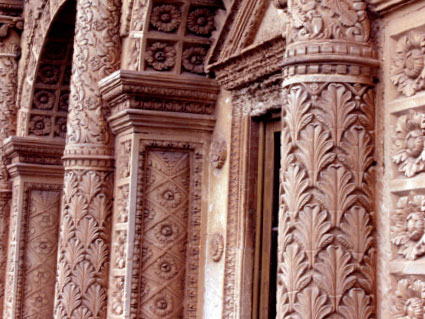
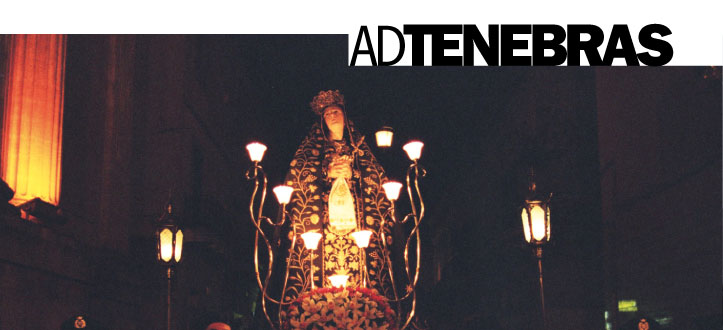
The Friday before Palm Sunday is the day the rites begin, the day that leads into the special atmosphere of Holy Week. The Arciconfraternita dell’ Orazione della Morte undertakes the fi rst of the processions, with a Sacred Image from the Venetian school, dated 1700 and crafted on wood on a stand.
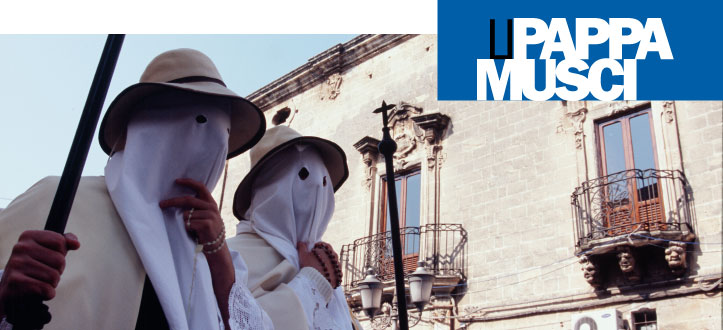
The rites move up a gear. After the celebration of the Holy Mass called “ in Cena Domini”, the members of the Church of Carmine (known as the “i Pappamusci“), dressed in their hooded robes, barefoot and carrying a staff, set out on their sacred, ancient pilgrimage. They visit every church in Francavilla, kneeling down to pray before the Altar known as the “Sepulchre”, i.e. the one on which the Tabernacle containing the Eucharist sits. This rite has been handed down from the Carmelite Friars, who accompanied pilgrims in the Holy Land to visit the places where the Passion of Christ took place. On the night of Holy Thursday, a group of members from the church, carrying the “troccola” (an ancient instrument with a particular sound) and accompanied by two musicians, intone a “nenia”, or funeral lament as they make their way through the streets of the town, inviting their fellow members to remain awake
and pray.
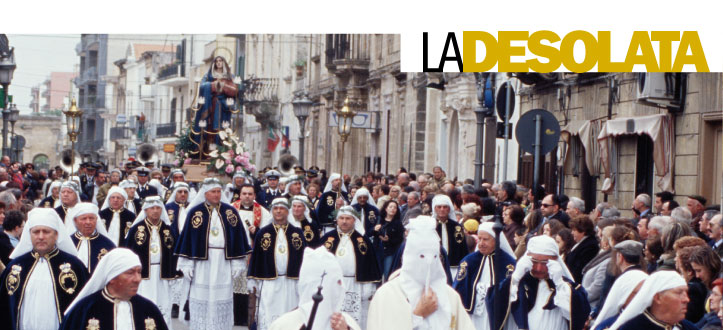
On the morning of Good Friday, the pilgrimage continues and it is the turn of the processions of Our Lady of Sorrows. The local people are deeply devoted to the Virgin, and the silence that reigns throughout the procession is broken only by the sound of the “trenule”, wooden boards on which little handles are mounted, which make a sharp sound with every movement of the wrist. The procession is formed by six confraternities. These confraternities are divided into groups of three, and every year one of the two groups takes part: either “ti li purieddi” (the poor) or “ti li ricchi” (of the rich).
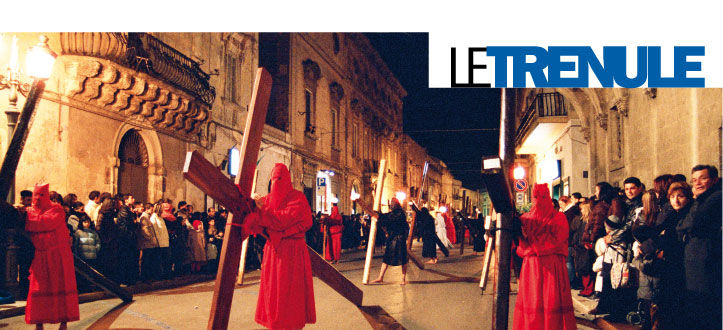
In the evening, the whole town comes to a standstill, as the “tremule” with their iron knockers produce a striking, mournful sound to express the grief of the faithful at the death of Christ. The Sacred Mysteries, in which all the Confraternities take part, each in their own distinctive robes, express both this tradition and their deeply rooted faith in Our Lord Jesus Christ. As the procession prepares to set out from the Church of Saint Clare, the large square in front of the Mother Church fi lls to bursting with people awaiting the departure of the marvellous statues, impeccably prepared for the Holy Procession. The procession sets forth to the piercing sound of the “tremula”, and the same sound is the signal given for the members of the Confraternita della Orazione della Morte to bring out the statue of Christ with the bread, the fi rst of a series of statues depicting the Stations of the Cross. This is followed by the moving statue of Christ in the Garden, with Jesus kneeling in prayer as he receives the Bitter Cup. The statue is carried with great devotion by the members of the Confraternita della Orazione della Morte. The atmosphere is enhanced by a band playing mournful funeral marches, as other statues are carried forth, such as the one of Christ in the garb of a madman, with a rope round his neck and his hands tied. This is followed by the statue of Christ on the Column, whipped and wearing a crown of thorns. Then it is the turn of the Ecce Homo: Christ holding a cane, with his hands tied, a crown of thorns on his head and a red cape on his shoulders. Especially striking is the statue known as the “Cascade” or “Spasm”, depicting Christ after falling under the weight of the Cross, dripping with blood and sweat. Following the passage of this statue is a moving procession of crossbearers known as “li pappamusci cu li trai”, repentant sinners dressed in their distinctive tunics who, out of devotion and penance, drag along heavy crosses they have prepared with trunks of wood of varying thickness and size. The penitents walk barefoot, dragging the crosses all along the route as a sign of their desire for forgiveness. At the end of the procession emerges Christ on the Cross, a Black Cross, carried out in procession in memory of Christ and on which hangs the Holy Shroud. Meanwhile, in the square in front of the Mother Church, silence reigns, broken only by the sound of the bands playing doleful funeral marches. It is then the turn of the horizontal statue of the Dead Christ, which used to be carried by the priests of the chapter, accompanied by the Imperiali princes and the head of the University. The last statue in the grand Procession of the Mysteries is the one of Our Lady of Sorrows, whose tears symbolise the pain of a mother and Her faith in the Resurrection of Her Son.
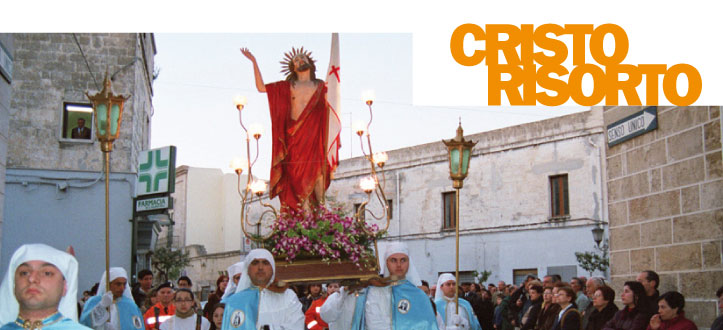
The Confraternity of Our Lady of the Immaculate Conception (Confraternita dell’Immacolata)
closes the rituals with the Procession of the Resurrected Christ.